Introduction
Burg Giebichenstein Halle University of Art and Design is a famous public art and design university located in Halle, Germany. Its history can be traced back to 1879 and it was officially established in 1915. It features art and design disciplines and provides students with high-quality educational conditions and learning environment.
Overview
Student size: There are more than 1,000 students, of which about two-thirds study design courses and one-third study art courses.
Faculty: There are currently 51 professorships, 25 of which are held by women, reflecting a certain degree of gender equality. The teachers have rich teaching and practical experience in their respective professional fields.
Proportion of international students: As an international art and design university, it attracts students from all over the world, but the specific proportion of international students has not yet been clearly found.
History
The school was founded in 1879 as the Halle School of Commercial Draftsmen and Craftsmen, which was formed by the merger of the Halle Provincial Trade School (established in 1852) and the School of Commercial Draftsmen (established in 1870).
On July 1, 1915, architect Paul Thiersch began to serve as the principal of the school, and the school was renamed the Halle School of Craftsmen and Applied Arts. Thiersch reformed the teaching program in accordance with the spirit of the German Craftsmen's Association and the ideas of medieval cathedral construction craftsmen.
In 1922, the school moved to the lower fortress of the Gibchenstein Castle and became the state and municipal school of applied arts in the city of Halle and Gibchenstein Castle.
After the closure of the Weimar Bauhaus in 1925, many Bauhaus teachers came to teach at the school, such as the sculptor Gerhard Marx.
After the Nazis came to power in 1933, some teachers were forced to leave the school, and the school's teaching mission also changed.
After World War II, the school was restored as a university of art and design, and in 1958 In 1975, the school added new disciplines such as glass, media art, and communication design. In 1976, the Department of Theory and Methodology was established. In 1989, it was renamed Burg Giebichenstein University of Art and Design Halle. In 2013, it obtained the right to confer doctoral degrees and celebrated its 100th anniversary in 2015.
Founded in 1915.
School Strength
Teaching Mode: It adopts practical teaching methods such as studios and workshops, equipped with complete facilities, allowing students to explore creativity and hone skills in an interdisciplinary way, while focusing on cultivating students' independent learning ability and innovative thinking.
Course Setting: It has two departments of art and design, offering 20 A variety of different art and design degree programs, including undergraduate, master's and doctoral programs, cover a wide range of disciplines from traditional art forms to modern design fields, such as painting, sculpture, graphic design, product design, fashion design, interior design, multimedia, etc.
International Exchange: Maintaining cooperative relations with institutions in many countries, providing students with opportunities for international exchanges and cooperation, and its annual exhibitions and other activities also showcase the outstanding talents and creativity of students, enhancing the school's reputation in the international art and design field.
Institutional Nature
Public non-profit university.
Educational Philosophy
Emphasis on cultivating students' foresight and design thinking beyond business background, focusing on the cultivation of students' practical professional skills, encouraging students to break away from traditional thinking patterns and explore new areas and new methods of art and design.
We are committed to promoting students to take a personalized and unique path in the field of art and design, and to cultivate students to become responsible, critical and independent individuals who can contribute to social development and cultural exchange through art design.
Key laboratories and disciplines
Key disciplines: Product design, ceramic and glass design, game and learning design, conceptual textile design and other disciplines are more prominent in teaching and research. The school's courses are closely centered around these key disciplines, providing students with opportunities for in-depth learning and practice, so that they can master cutting-edge knowledge and skills in these fields.
Key laboratories: Although there is no clear key laboratory in the traditional sense, the school's studios and workshops are well-equipped and advanced, providing students with good conditions for practice and research, which is equivalent to professional practice. "Laboratory", where students can carry out various art creation and design practice activities, combine theoretical knowledge with practical operations, and improve their professional abilities.
Department
The school has an art department and a design department. The two departments together constitute the school's subject system, providing students with a comprehensive and systematic art and design education.
Ranking
Ranked 7401st among 14,131 universities in the world, 1634th among 2785 universities in Europe, 206th among 369 universities in Germany, 7th among 9 universities in Saxony-Anhalt, and 2nd among 3 universities in Halle.
In another ranking in 2024, it ranked 2959th in the world and 179th in Germany.
Expenses
For all students, there is no tuition fee during the study period, but a semester fee of about 70 euros per semester is required for various school management and services.
Since 2020 Starting from the winter semester of 2017, no long-term fees will be charged.
Campus
Campus location: The school's campuses are located in the old town of Halle. The design campus is located at Neuwerk 7, the art campus is located at Seebener Straße 1, and the Hermes Building (Hermesstraße 5) is also used to offer various art-related courses. The school is located in the lower fortress of Gibchenstein Castle. Its unique geographical location provides students with a vibrant and inspiring learning environment.
Teaching facilities: It has modern studios, workshops, libraries and other teaching facilities to meet students' needs in art creation, design practice and academic research, and provide students with good learning conditions.
Campus life: The school organizes various academic lectures, cultural activities and social activities to enrich students' extracurricular life and promote exchanges and cooperation among students. In addition, since the campus is located in the city center, the surrounding cultural, commercial and other resources are rich, and students can make full use of these resources to broaden their horizons and enrich their learning experience.
-
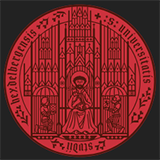
Heidelberg University
-
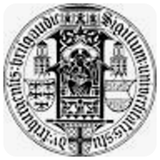
University of Freiburg
-
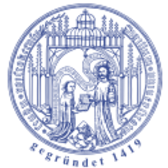
University of Rostock
-
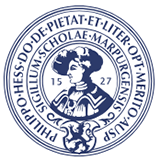
University of Marburg
-
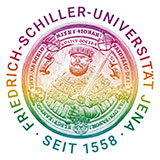
University of Jena
-
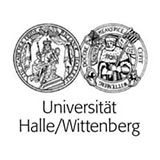
University of Halle-Wittenberg
-
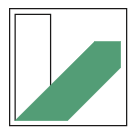
University of Bayreuth
-

Leipzig University
-
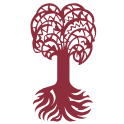
University of Tübingen
-
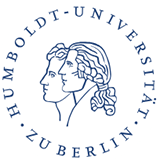
Humboldt University of Berlin
-

Mesoamerican University
-

Istmo University
-

Mariano Galvez University of Guatemala
-

Regional University of Guatemala
-

Galileo University
-

Francisco Marroquín University
-

Rafael Landívar University
-

University of the Valley of Guatemala
-

University of San Carlos of Guatemala
-

Technological Institute of Tlaxcala Plateau
-

Golfo University
-

Technological University of South Sonora
-

Technological University of Huejotzingo
-

Tizimín Institute of Technology
-

Chilpancingo Institute of Technology

